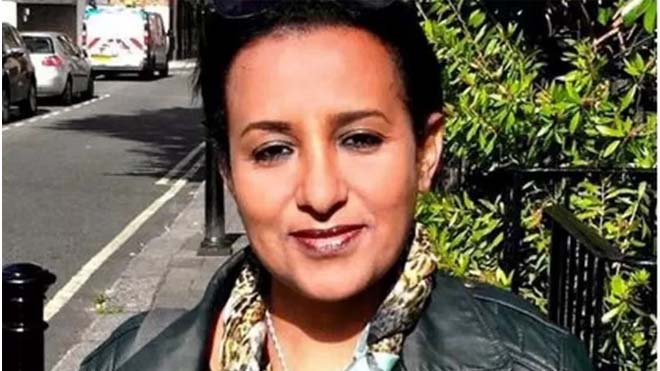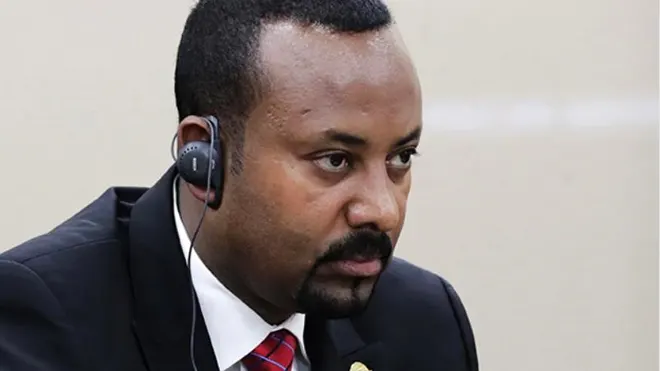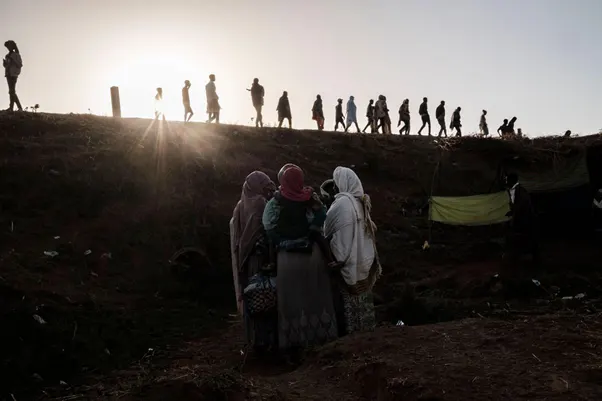Eritrea: In Solidarity With the Forces of Good Part 1 of 24
(Topics)
By: Yonas Araya - April 8, 2002
On May 29, 2000, I posted my last message on Dehai.org in which I called on Issayas to make an honorable exit from Office by transferring power to someone he trusted, but that if failed to do so, that the nation would face an unprecedented danger. In my last posting, I also promised the readers that I would post my views, which I believed then Eritreans were ready for, or which I believed then would fall into the cracks, or which I believed then would be counterproductive, when their time arrived. So many events have unfolded since then, and many Eritreans have also expressed their views on each one of them. Nonetheless, I have now decided to prepare a package of articles and essays where I will express my views, in my own words, on the many aspects that Eritrea has so far witnessed, and on events that I believe the nation will face in the future. In some parts of the package, I will put forth my proposal to the post-Issayas governments, but in many of them, I will simply make my views known.
Since the series will be posted in several weeks and not in one day, it has proved impossible for me to release them in such a way that adheres to historical, chronological or topical order. Therefore I will release them in the order in which I believe will accommodate the interests of diverse readers.
The 24-part package will be referred to as," In Solidarity With the Forces of Good," and each part will be identified as, part 1 of 24, part 2 of 24 ... part 24 of 24. I will prepare each part in two to six days depending on my various circumstances. Each part might comprise two to 10 pages.
I also would like to make it known to all readers beforehand that I do not belong to any political organization. I consider myself an independent person, and my views are based on my own independent thinking and researches.
Below, I will give the readers a glimpse of what each part will contain:
Parts 1 of 6 will discuss mainly about the Badme War, its origins and its consequences, and whether or not the war was needed at all, and whether or not there was a way to stop it before and after it broke out.
Part 1 of 24, will discuss the causes of the war.
Part 2 of 24, will go over the causes of the war as were presented by the GOE and its cadres and look into each one of them as to whether or not they could've been the real causes, and whether those reasons alone could justify a
war and the loss of Eritrean lives.
Part 3 of 24, will discuss the many steps that Issayas should have gone through to resolve the border issue before and after the war broke out, and whether Issayas as a leader had an opportunity to lay the ground for a win-win exit from the war.
Part 4 of 24, will discuss why Eritreans bought into the war effort and whether or not Eritrean scholars and the US could've helped stop the war and minimize the war casualties. Also will discuss why both the Ethiopian and Eritrean
peoples have been the real victims of the War.
Part 5 of 24. will discuss hypothetical scenarios of whether the ethnic and religious backgrounds of both Eritrean and Ethiopian leaders aggravated the conflict, and what Eritreans need to do to prevent the recurrence of the same episode in the future.
Part 6 of 24 the real war casualties and the real death toll of Eritrean and Ethiopian soldiers and why such a heavy human casualty in a two-year war.
Parts 7 and 8 will discuss why the PFDJ usurped the Eritrean land, what are the short-term benefits for the PFDJ, and what are the long-term consequences for the whole nation. Also will discuss the use and dispose of habit of the EPLF/PFDJ.
Part 9 of 24 will discuss the good, the bad, and the ugly nature of Eritreans in Eritrea and abroad, and whether Eritreans are better off under PFDJ than they had been for hundreds of years.
Part 10 of 24 will commemorate the Mi Habar heros. Also, why Eritreans have turned their backs against these heros.
Parts 11 through 13 of 24 will discuss whether Tigrigna and Arabic will complement or destroy each other in Eritrea. Will also discuss the pros and cons of declaring national or official languages.
Part 14 of 24 will discuss whether the formation of the EPLF by Issayas benefitted Eritrean Christians and the nation alike, or whether the negative results have outweighed the positive of such a splinter group. Also, will discuss PFDJ's prisons and prison camps. Will also discuss the use and dispose of habit of the EPLF/PFDJ
Part 15 of 24 will discuss the use and dispose of habit of, and the systematic obliteration of Eritrean religions and Eritrean culture by the PFDJ.
Part 16 of 24 will discuss whether the PFDJ will be committed to a true political plurality, and whether it will ever conduct a true and fair election. Also will discuss how the PFDJ has been committed to excluding its real and imagined opponents from the outset, right since it set its feet in Asmara.
Part 17 of 24 will discuss why the PFDJ has never been and will never be committed to the freedom of the press, and whether or not the PFDJ is a closet communist.
Part 18 of 24 will discuss why Issayas chose to take the Precedency hostage and why he has refused to name his successor, also whether or not Issayas could have been made the George Washington of Eritrea, and whether 200 years from now he could have been remembered by Eritrean children in the same way as Washington is being remembered by the US children in the USA now.
Part 19 of 24 how Eritrea and Ethiopia can coexist in the future. How Eritrea could resolve Ethiopia's access to the Red Sea permanently. For this, I will let the readers keep guessing what I mean by permanently.
Part 20 of 24 will discuss what was behind PFDJ's decision to alter the regional map of Eritrea and how it succeeded in doing so without meeting a stiff resistence from Eritreans, despite their disapproval of the measure.
Part 21 of 24 will discuss how the PFDJ is banking on its name, shaebia or ginbar, why it chose to keep those names. Will discuss why the PFDJ imposed its own flag on Eritrea and the need to restore the Eritrean flag and change the current choice of an emblem of the PFDJ. Will also discuss why a true-multi party system is a must-have for Eritrea. Also the need for all political parties to drop their old names, and the need to prohibit parties from including terms that connote violence or militancy ... in their names.
Part 22 of 24 will comment on Eritrea's foreign policy and on whether or not Eritrea should become a member of the Arab League and under what circumstances.
Part 23 of 24 Conclusion, will also discuss the future of the PFDJ and its leader. Whether the PFDJ has an ace in the hole, which could be an ultimate weapon to its survival. Also will discuss the need of religion in Eritreans' lives, and why all Eritreans collectively should shoulder the responsibility for what their country is in now, also will point out why all Eritreans need to forgive one another and why peace is around the corner for Eritrea and Eritreans.
Part 24 of 24 will discuss whether the local legends, (for those who believe in legends), which have been passing down from generation to generation in Eritrea, have any relevance to the present and future of Eritrea.I thank everyone in advance.
In Solidarity With the Forces of Good
(part 1 of 24)
By Yonas Araya
Give the Devil (Melles/Woyane) His Due.
Eritrea came out victorious in 1991 militarily, and in 1993 politically, and the timing of these victories were wholly attributed to the EPLF's alliance with the TPLF. Yes, Eritrea would have come out victorious eventually, but not in 1991 militarily, and not in 1993 politically.Though the Afaabet Battle marked the beginning of the end for Ethiopian occupation of Eritrea, that victory alone would've accomplished very little, or nothing, had it not been followed by the total control of Tigray by the Woyanes.
Even the capturing of Massawa by the EPLF could've accomplished very little, or nothing, to tighten the noose around the Dergue's neck, had Tigray and Begemidir not been under the Woyane's control. The EPLF would have been forced to double its forces in order to defend the border and to contain the Ethiopian forces in Eritrea. The Dergue could've returned into the liberated regions of Eritrea through Emini Hajer, Badme, Merab, Tserona and Zelambesa, from Ethiopia.
Moreover, this has been said over and over again: had Melles not agreed, against the wish of many Ethiopians and friends of Ethiopia, to resolve the Eritrean issue through a UN-sponsored referendum, no nation would've dared to recognize Eritrea as an independent nation.
Therefore, even after taking all the negative contributions of the Woyane against the Eritrean revolution into consideration, including its interference in Eritrean internal affairs at the invitation of the EPLF, its positive contribution to the Eritrean revolution had outweighed the negative role it had played. I am mentioning this in reference to many complaints by many Eritrean writers amid the border war, "how could the Woyanes do this to us, after we have done all the wonderful things for them."
Many Dashed Hopes for Issayas, Before the Badme War
For many years while in the Sahel region, Issayas was fantasizing of replicating the Soviet empire to our region. The Soviet Empire, after surrounding itself by friendly and subdued states, not only did it feel secure behind the iron curtain, but also served as the economic, military, and a political center of its satellites, its subdued neighbors. Thus he too had this daydream to make Eritrea the economic, military, and a political center for the nations of the Horn of Africa, from the Sudan to Somalia, where his safety and power would be protected forever by subdued nations, from external oppositions and internal reformers.With this dream in mind, when in 1992 Somalia plunged into chaos, convinced that he could cure Somalia's ills and thereafter install his grand plan, Issayas sought the permission of the UN to send Eritrean troops to Somalia, but his hope was dashed when the UN refused due to the fact that Eritrea was not a member of the UN.
Furthermore, his dream of replicating the Bolshevik's theses (with no smell of opposition, and no smell of free press) in Eritrea was dashed when the Islamist controlled Sudanese regime refused to hand him over all Eritreans opposed to his regime. Angry at the response of the Sudan, in 1995 Issayas threatened against, and took actions to overthrow and replace the Sudanese regime by pro-Bolsheviks (pro-PFDJ) regime, and assured himself he would turn his dreams into reality within two years. But that too disappointed him when neither the SPLA nor the National Democratic Alliance (NDA) failed to score any victory against the government of Bashir.Furthermore, before the Badme War broke out, many other issues were pressing on Issayas:
- He had many tegadelti locked in prisons as political prisoners, including some from the 1993 demonstrations against his regime, which he did not know how to deal with. Obviously, he could not deal with the prisoners in the same way he used to when he was in Sahel (execute them) without leaving some traces.
- Every year, thousands of students were competing for a couple of a hundred admissions at Asmara University, and all the procrastination ploys that he contrived such as, national service and military training at Sawa for all highschool graduates, were not really buying him enough time as he had hoped they would.
- From the outset, Issayas never promised liberty to Eritreans but "economic prosperity" based on his own terms, but his idea of economic prosperity through a planned economy, a doctrine which the Soviets had earlier tried but failed, was to his surprise failing him. But still because he was convinced that there was nothing wrong with the doctrine of planned economy but with the failed communist states, and in Eritrea too, he was still convinced that there was nothing wrong with the doctrine but with those who were surrounding him, and to that end, at one time, he publicly expressed his dismay with those that he had chosen to surround him by saying, he could not clap with one hand. Yet, he still did not know how to deliver on the economic prosperity he had promised the nation.
- Eritreans were being uneasy about his regime, and his popularity was going into a free-fall inside and abroad. More Eritreans were being comfortable investing in Ethiopia than in Eritrea. Moreover, Melles was appearing, and being regarded, as an astute and a better politician than Issayas, by both Eritreans and world leaders.
In the meanwhile, in a deliberate attempt to stall the establishment of a constitutional government, and also in an attempt to buy time to strengthen his fortress, Issayas had ordered the drafting of the constitution to go through twists and turns, but his fear of establishing a constitutional government, or lack thereof, came true when in May of 1997 the drafters of the constitution completed the draft law and handed it over to him. Though he had made sure that the constitution was drafted to his liking, there were articles, such as the press and multiparty law, which he had no intention of implementing. Therefore he shelved the draft law and directed his media to suppress any news about the constitution. But in spite of his efforts, behind his back, the request for the implementation of the constitution was getting louder among the tegadelti, thus he was looking for any excuse, and the means, to mute, and if not, to extinguish the voice of the vocal tegadelti.
While this was going on, after many years of plundering Ethiopian wealth freely through his conglomerate of an organized crime (PFDJ), the Wonaye was getting assertive and trying to get out from under his thumb, and with the introduction of his own currency, Issayas's benefit was being severely limited in Ethiopia.Therefore, amid these challenges, Issayas attempted to create two conditions: In Eritrea, he wanted to create a frenzy, which could enable him to buy time and divert the public opinion, even for a short period. And in Ethiopia, he wanted to intimidate and blackmail its leaders into abiding by his terms. Hence he knew he could accomplish these two objectives with the only way he had known - show of force and military victory.
Therefore, in February of 1998 Issayas mobilized his army, active and reserve, took inventory of the members of the Army paramedics, including of those that he had abandoned for many years, and made sure that all systems were "go."
Thereafter, in May of 1998, he had ordered his Army commander to carry out an assault on the Ethiopian militia in Badme, before he left for Saudi Arabia. It was in character with Issayas, and it was one of his favorite and played out maneuvers. Throughout his political career, when a crime was committed, or appeared to have been committed by someone, he wasn't home, he was in Lebanon, in Khartoum, he was far away, he had "an air-tight alibi." Then if the operation succeeded, he would hog all the credit for himself, but if the operation failed, he would scold the commander publicly then would demote, or transfer him elsewhere.
Issayas Afeworki's Dilemma in the Aftermath of the Badme War.
In the wake of the first battle, Issayas was faced with two antagonistic phenomena: In Eritrea, he got more than he had bargained for -- his popularity skyrocketed, but in Ethiopia, his action backfired.
On the Ethiopian Side:
First of all with all his bragging about his knowledge of the internal secrets of Ethiopia, his only knowledge was that he knew that Ethiopia had fewer and less prepared army, and less armaments than Eritrea, but he did not know that Melles would be powerless when attacked, nor did he expect that Ethiopia would react the way it did. He was telling to himself, no, Ethiopia was not supposed to react the way it did. It was supposed to be intimidated by my show of force and recede, or so he thought.Issayas is used to having it his way - dictating agreement on his own term. In the past, he bluffed Sudan and Sudan blinked, he invaded Yemen and Yemen restrained, he attacked Djibouti, and Djibouti receded; he bluffed Ethiopia, but to his surprise, Ethiopia reacted in a way he had never remotely anticipated it would. Ethiopia was not supposed to react the way it did. He still believed there was nothing wrong with his actions but with the reactions from Ethiopia.
An Attack on Badme Was a Direct Attack at Melles.
At a time when Melles was taking a tremendous heat from the Sye group, trying unsuccessfully to justify his previous decisions regarding Eritrea's independence to his people and friends of his country, Issayas Afeworki, in his infinite arrogance, as usual, calculated wrongly, and attacked Eritrea's only friend, Meles Zenawi, because the attack on Badme could only constitute a direct attack at Melles. Yes, by attacking this lone friend of Eritrea, Issayas empowered the enemies of Eritrea in Ethiopia.
What was Issayas expecting in return of the assault he directed against Ethiopia? Was Melles, a leader of a nation with 17-times the size of the population of Eritrea, a leader who was being constantly accused of betraying Ethiopia's 50-year principle of keeping Eritrea inside Ethiopia going to turn the other chic? No, he could not turn the other chic. Had Melles not reacted the way he did, he would not have survived a day.
But even after Ethiopia reacted the way it did, a prudent leader would've immediately consulted with his staff and legislators and sought for a peaceful way to get out of the situation. But instead, Issayas became so furious at Ethiopia's reaction thus resorted to manipulation. He presented his ten-point agenda and commanded, literally, that Melles meets him, that Ethiopia accepts his request, and that the conflict be resolved within six months. He started talking about finding a long-lasting solution to the Badme's border problem, something which he should have done so publicly before launching an attack on Ethiopia and before spilling the blood of Eritreans and Ethiopians, something which he should have done so between 1993 and 1997. But what was also astounding to many was that he wanted to continue occupying the territory he forcibly occupied. Simply because Yemen had let him stay in what was rightfully hers, a territory he had forcibly occupied, here too, he had expected Ethiopia to accommodate his ego. Again what was worse was, when thanks to him, Melles was under extreme pressure from the Sye group, being blamed for the way Issayas was treating Ethiopia, Issayas thought this severely wounded leader, Melles, was in control of the situation in his country, that Melles had the power to meet his demands. Nonetheless Issayas opted to enjoy his popularity among his people.
On the Eritrean Side:
Not only was he able to send off the "unruly" vocal tegadeltito the war front and thereby eliminate them, but also he was able to bury the draft law. But what was worse was that many Eritreans, including many scholars blamed the Wonaye as short-circuiting the drafting of the constitution. They really believed the draft law had not been completed a year before the War broke out. And even those who knew the draft law had been completed and transferred to Issayas, refused to inform the misguided ones. The truth was that between May 1997 through May 1998, during the period of peace, before the war broke out, Issayas had more than enough time to implement many of the articles in the constitution and to lay the ground for the implementation of the rest, which he had not done so, none whatsoever.Nonetheless, a couple of months into the war, Issayas, the person who was mentally disturbed and demoralized, therefore, found a new reason to pat himself on the back for the "job well done" and enjoy popularity, yet he was not about to share that popularity with any of his staff. He took control of the war, and made the war his own. Moreover, though he knew precisely what the cause of the war was, he exploited both the Woyane's stupidity of maneuvering its army around Zelambessa and Assab, and the pride of Eritreans, thus turned the conflict into "a war for pride," and him being the spearhead of that war for pride. To that end, he attempted to justify the war and provided Eritreans with the following five reasons as being the cause of the war:
- Woyane has a grand plan to link Eritrea into Tigray and create a Tigray-Tigrigne nation.
- The Woyane issued a new map that encompassed Badme into Ethiopia. (the issue of
territorial integrity)- The Woyane killed 7 to 12 Eritrean civilians (the exact number varied many times)
who approached it to broker the then ongoing border problem.- The Woyane wanted to colonize Eritrea. (the issue of national sovereignty)
- The Woyane wanted to overthrow the GoE.
Will continue in part 2 of 24


![[AIM] Asmarino Independent Media](/images/logo/ailogo.png)






